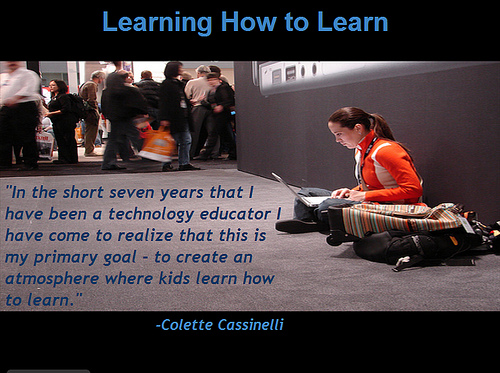Project Name
Working with women requiring therapeutic intervention.
A module contained within the midwifery practice skills course for first year bachelor of midwifery students.
Date:
3rd October 2008
Organisation:
Otago Polytechnic
Project plan author contact details
Carolyn McIntosh
Email: carolynm@tekotago.ac.nz
skype: carolynmcintosh
Delicious: carolynmcintosh
Executive summary
This plan outlines the process that will be involved in developing a new module within a new course in a revamped program for midwifery undergraduate education in the South Island of New Zealand. The programme is to be delivered as a collaborative exercise with Otago Polytechnic and Christchurch Polytechnic. The course this focuses on is the midwifery practice skills course and the module it relates specifically to is Working With women Requiring Therapeutic Intervention. Various selected skills will be learned through engaging with modular learning resources delivered through the Moodle learning management system, through face to face learning in the intensives delivered at the beginning, middle and end of the year and through weekly face to face tutorials. Student learning will be supported by encouraging group interaction and learning communities, through interaction and support from preceptor midwives in practice, through interaction and support from midwifery practice facilitators and through interaction and support from midwifery lecturers. This aligns well with the Otago Polytecnic strategic direction for a move to greater flexibility in course delivery and collaboration with other educational institutions.
My Plan
Background
There are some challenges in teaching first year midwifery students. The students are a diverse group of women (we have not had any men in our programme to this point although it is always possible that a man may join the programme at some point in time). Students vary in age and ability. All have met the academic criteria for entry, which requires the equivalent of university entrance qualifications and ability to work at an academic degree programme level. Some have birth experience of their own, working as a doula or childbirth educator right through to recent school leavers with no experience of childbirth at all. So providing learning resources which will keep everyone stimulated and satisfied but understanding and able to keep up with the programme is a challenge. Giving students enough practice experience, while also recognising that they have not yet got the theoretical knowledge to support this experience, is also a challenge. Students need to understand that they have a very limited scope of practice and need to be supervised at all times when involved in midwifery practice. Careful consideration needs to be given to scaffolding learning to meet the learner’s level of understanding and learning needs.
Valliathan discusses three models for blended learning, skill driven, attitude driven and competence drive. I believe all three of these come into play for blended learning in the midwifery practice skills context. Clearly this is a skills based course and skills acquisition is an important part of the course. Attitude is also an important aspect of learning about midwifery practice. Students often come into the course with preconceived ideas which can change dramatically as they are exposed to practice and actual childbirth experiences. They need the opportunity to consider, reflect, share and discuss these experiences and consider the implication for their own midwifery practice. Confidence and competence will grow when students work with mentor or preceptor midwives in practice. These aspects must all be considered within the overall plan. In Valiathan’s discussion of these three aspects of blended learning there are different strategies that accompany each. In the skill model there needs to be a clear plan which can be self paced for the student but requires a strict schedule. There needs to be close contact and overview from the instructor with demonstration of techniques which can be achieved in face to face and supported by synchronous online labs. The attitude model is supported by synchronous online discussion, group work and role plays, and the competence model is achieved through working with mentors and access to a repository of information in a learning management system. All aspects involve close overview and support from a midwifery instructor.
Taking these models and learning requirements into consideration it is necessary in the learning plan to have systems in place for regular contact between lecturers and students and also to have a clear structure and learning goals. Students need a high level of motivation and will need to come prepared to face to face learning ready to interact with one another and to engage with the practical skills learning experience. Students will need to identify their learning goals. They need to identify what they already know about particular skills, and will need clear targets, criteria, standards and exemplars to help them to identify their learning goals (Nichol & Macfarlane-Dick, 2006). As these will differ from student to student it will be necessary for each student to develop individualised goals and an individualised learning plan.
It is recognised that individuals differ in the way in which they learn best. There are several different ways in which this has been represented. Perhaps the best known of these is the VARK model of learning styles. These are visual, auditory reader and kinesthetic. According to this model learners prefer to learn by seeing pictures or video etc, by hearing either the spoken word or learning is enhanced by listening to music while studying, by reading or by actively doing. The VARK model recognises that while individuals may have a strong personal preference they may also have a mixture of learning styles. If students understand how they learn best themselves then they can use the resources that will best support their learning. As educators we need to provide material to the students in a variety of ways taking into account all of these styles so that there is something there for everyone. Opportunities need to be provided for students to consider new skills, to see the proper process, to reflect identifying implications for practice and to actually use the skills in practice (Kolb, 1984; Atherton, 2005). Reflection leads to a deeper level of learning it helps the student to contextualise and is a key component of learning. The reflective process is a key component of lifelong learning in midwifery (Taylor, 2000).
This model of education follows a constructivist approach as described by Friere (Gadotti, 1994) and Knowles (Knowles & Knowles, 1972). Friere believed that individuals learned best in groups and that learning is enhanced by reflection, while Knowles asserts that adults learn through working together and building on previous experiences. Much of this ‘big picture’ aspect of planning for the students learning experience is considered in the overall midwifery programme but also needs to be considered in planning of each learning experience.
Aim
What am I going to do?
The midwifery practice skills course has been divided into four modules. Pregnancy, labour and birth, postnatal and therapeutic interventions. For this plan I am focusing on the module ‘therapeutic interventions’. Unlike the other three this modules will run across the entire first year but principally in the first and second trimesters. The aim of this module is to familiarise students with certain specific skills which are sometimes required during the childbearing year.
Objectives
I will design a learning program for selected midwifery practice skills. Face to face learning will occur during the three, two week intensives, through weekly tutorial session with their midwifery practice facilitator in their local area and with midwife preceptors with whom they will be gaining midwifery practice experience. Students will be able to access course material and learning resources through the moodle learning management system. Students will also have the opportunity to attend elluminate class sessions from their own home, or local area where they have computer access.
Performance indicators
Students need to be able to
1. demonstrate an ability to use communication skills to develop effective professional relationships with their peers and colleagues.
2. utilise an awareness of effective communication to enhance the quality of the childbearing experience for women and their families.
3. safely perform a range of selected practice skills and be able to outline their underlying theories and rationale.
4. accurately perform drug calculations and demonstrate skill of medication administration.
What are the perceived flexible learning needs of the people that my plan is targeting?
Levels of prior knowledge
As stated in previously students enrolled in the program will have a variety of previous experience and prior knowledge on which they can build their learning. Some students come with previous nursing experience, as enrolled nurses for example. Some may have completed university study and may have a strong knowledge of biology and body systems while others will have only very basic knowledge.
Levels of literacy and numeracy
Students have to have NCEA level 3 entry requirements. Although this should mean that all have good literacy and numeracy skills in reality the level of skill will vary from individual to individual. It is likely that students may range from school leavers who have good digital literacy skills to mature adults who have very little knowledge of computers and digital resources.
Ability and disability
Midwifery practice is physically demanding work which may discount many people who have a physical disability from applying or being able to enter the programme. None the less there are many levels of physical and mental ability and disability and it is possible that our students will vary considerably in these characteristics.
Learning at a distance
Students will vary in their geographical distance from the Polytechnic. Some may be based in Christchurch or Dunedin but others will be centred around other centres such as Nelson Marlborough, Central Otago, Southland etc.
Flexibility in time
Some students may have part time employment. Mothers may need fit in study around family commitments and rural women may be involved in farming activities.
What type of flexible learning services will there be?
Enrollment; There is little ability to be flexible with enrollment. Students will commence the course at the start of the academic year. Students may however choose to enroll part time initially doing mainly theory papers the first year and practice papers the following year.
Assessment;
Summative assessment.
Students will be encouraged to develop an Eportfolio. This will allow them to identify their own learning goals and to reflect on their learning. As part of this eportfolio students will develop a learning contract. They will be able to choose which skill they feel they would like to concentrate on for this learning contract. They will identify what prior knowledge they have of this skill. They will then identify their learning needs and expected outcomes. Together with the lecturer they will identify what they need to do and what resources they will need to be able to achieve their learning needs and finally they will provide evidence that they have accomplished this. This will form part of the summative assessment. The other assessment is a practice skills assessment where the students role play a scenario in examination conditions. Although this is not particularly flexible the students will be able to build the scenarios on which they may be tested themselves as a group. The performance indicators of communication will be assessed during this role play assessment. Women from the community will play the role of a woman and will provide the students with feedback on their communication and will also contribute the the mark the student is allocated for this skills. In addition there will be an examination which will be conducted during the final intensive where students will be tested on their knowledge of drug calculations.
Formative assessment:
A variety of formative assessments may be used to help with structure of the course material. This will also add interest to material the students are accessing at a distance and will help them to identify their strengths and weaknesses. Formative assessment should be closely linked to the skill which is being learned. It should stimulate the students interest and provide feedback which will stimulate further learning (Crossuard, Pryor & Torrance, 2000)
Communication strategies;
Students require good computer literacy skills to enable access to all the resources they will need for this course and also to communicate with each other and with lecturers. Students who need extra help will be supported with resources such as the Otago information literacy resource. Flexibility in
terms of communication will be assured through the opportunity to communicate in a variety of ways at times that are negotiated and suitable to all. Students will be able to engage with many of the online resources for communication at any time that suits them, for example discussion forums and preparing material for inclusion in Eportfolios.
Student to lecturer
Students will be able to maintain regular contact with lecturers online by email , through regular Elluminate group discussion, through participation in discussion forums online and by sharing parts of their Eportfolio work. They will also be able to communicate directly with the lecturer by telephone or by text messaging.
Students to midwifery practice facilitator
Students may be able to communicate with Midwifery practice facilitators through discussion forums and sharing part of their Eportfolio work. Students will be able to communicate regularly to face with the midwifery practice facilitator through on-site weekly tutorial group meetings, regular contact and catch ups while working with midwifery preceptors and during midwifery and other clinical practice placements.
Student to student
Students will be able to communicate with each other through online discussion forums, through sharing parts of their Eportfolio work and through contact during tutorial groups and face to face intensives. Students will be encouraged to develop close networks with other students to provide support and shared learning experience through a learning community (Kilpatrick, Barrett & Jones, 2008).
Midwifery practice facilitator to student
Midwifery practice facilitator will be located in the area where the student is practicing. They will be meeting face to face with students on a weekly basis and will negotiate with students individually around communication needs at other times. they will also have access and contribute to discussion forums and students Eportfolio work.
Lecturer to student
Lecturers will also be midwifery practice facilitators for some of the students in the class. They will maintain contact with the class through online discussion forums and email contact. They will also be able to communicate directly with students through cell phones and text messaging and during face to face in the intensives.
Information formats;
Students will be accessing course material through the Moodle learning management system. They will also be sharing information in groups through tutorials. They will be able to discuss and share information through discussion forums and through sharing learning through their Eportfolio work. Student learning will be enhanced through the use of quizzes which challenge the students and provide instant feedback. Learning packages will be developed and will be accessible online for
Standard precautions
Working with a sterile field
Medication administration
Urinary cathaterisation
Working with women with limited mobility
Basic knot tying and suture technique
These learning packages will be supported by group discussion in online discussion forums and during weekly tutorial group meetings. Some such as working with a sterile field, urinary catheterisation, and administering injections will be taught face to face and reinforced with the learning packages.
In addition a resource is being developed to run alongside which will support student learning about drug calculations. Students will also have access to open access freely available drug calculation software packages.
Learning support services including technical support.
Students will be supported by each others through the development of learning communities. They will also be supported by their midwifery practice facilitator and by midwife preceptors. They will have overarching learning support from their lecturers. They will also be supported by having constant access to learning materials online. Students who are have a disability and need extra support with this can access this through disability support services either at Otago Polytechnic or at Christchurch Polytechnic. All students will be made aware how they can access this support if they need it and lecturers will be aware of how students can access this support. Students who need extra support with literacy, numeracy or digital literacy will be given extra support through online resources which can assist them. Otago students can access learning support services on campus at Otago Polytechnic or through the various community centres maintained by Otago Polytechnic. Support with information technology systems will be provided through the IT services at Otago Polytechnic and Christchurch Polytechnic. Moodle help is available online through moodle.
The type of services which already exist that compliment and/or compete with the plan.
As this is a whole new way of delivering the programme there is a lot of development work to do. Not just te material I am working on but across the entire programme. Currently we use Blackboard as our learning management system so getting familiar with Moodle is a bit of a challenge. Transitioning to delivering more content online would lend itself to more content being available in an open forum. This is happening and is an exciting aspect of the new courses. We are using blip TV to store some video material which can then be linked into courses. Not only does this mean that the material is available for our own students but it will mean that it is also available for others. Existing course material has been developed for face to face teaching and so most needs major changes and updating and a lot of new material needs to be developed.
How complimentary or competitive services will be used favorably?
There is a great deal of material and learning resources which have developed by others and made freely available online for anyone to use. Some of these are suitable and will enhance the students learning experience. Some are excellent and would be very hard for us to replicate in any way. At the same time we will be developing some new learning resources which are not available or where those that are do not match our needs. It behooves us to make these freely available for others to use as we are using resources developed by others.
Outline of how the following items will be addressed:
Sustainability – social, ecological and economical factors;
Sustainability will be addressed in the programme through a special course. It also needs to be integrated into all aspects of the program and will be addressed in the course work I am developing. Therapeutic skills involves the use and disposal of items which needs to be discussed with students as well as maintaining there own and their clients safety they also need to consider the impact on the environment of these items. No all women will need therapeutic intervention and how to keep the use of these interventions to a minimum will be addressed here and in other aspects of the course. We seem to be entering an era of greater awareness of personal, social and environmental impact of all our actions and it is likely that new resources will be developed which reduce the impact on the person society and the environment. It is important to keep abreast of these changes and students will be encouraged to identify how they can do this.
Access & equity;
I have little control over access. Students participating in this part of the course will be enrolled in the larger course. As stated above, resources are available online which will support student learning of this topic, we will also be developing resources which will be available online. I plan, over time, to build these into a structured format online that anyone anywhere can access. Therefore, although the entire course will not be available online, components which will enhance any midwifery students learning anywhere, will be.
Cultural diversity.
All students will be considered as autonomous individuals whose rights and values are respected. They will have obligations within the course to treat women as clients with the same respect.
How this plan aligns with Otago Polytechnics strategic direction
This new course, as part of the larger midwifery practice course aligns with the strategic direction.
Otago polytechnic is committed to providing relevant, flexible and accessible learning opportunities (p, 7). In addition it is committed to collaborating with other tertiary providers and organisation, (p, 13) (Otago polytechnic council). the flexible and multifaceted delivery of this course accessible in a variety of ways through a variety of resources and in collaboration with Christchurch Polytechnic, meets these objectives of the Polytecnic.
-
References.
Atherton, J. S. (2005). Learning and Teaching: Experiential Learning [On-line] UK: Retrieved October 2, 2008 from: http://www.learningandteaching.info/learning/experience.htm
Crossouard, B., Pryor, J. & Torrance, H. (2004). Creating an alternative assessment regime with oneline formative assessment: Developing a researcher identity. Paper presented at the European Conference on Educational Research, Crete, 22-25 September, 2004. Retrieved October 2, 2008 from http://www.onlineassessment.nu/onlineas_webb/products/sussexFinal041001.pdf
Gadotti, M. (1994) Reading Paulo Freire. His life and work, New York: SUNY Press.
Kilpatrick, S., Barrett, M., Jones, T. (2008). Defining learning communites. Faculty of education. University of Tasmania, Australia. Retrieved October 3, 2008 from: http://www.aare.edu.au/03pap/jon03441.pdf
Knowles, M. S. and Knowles, H. F. (1972) (Revised Edition) Introduction to Group Dynamics, Chicago: Association Press. published by New York: Cambridge Books.
Kolb, D. A. (1984). Experiential Learning: experience as the source of learning and development New Jersey: Prentice-Hall
Nichol, D. J., Macfarlane-Dick, D. (2006). Formative assessment and self regulated learning: A model and seven principles of good feedback practice. Studies in higher education. 31 (2) 199-218. Retrieved October 2, 2008 from http://tltt.strath.ac.uk/REAP/public/Resources/DN_SHE_Final.pdf
Otago Polytechnic Council (2005). Charter document. Retrieved October 3, 2008, from://www.otagopolytechnic.ac.nz/fileadmin/Corporate/PDFs/About/Otago_Polytechnic_Charter_2006-2010_.pdf
Taylor, B. J. (2000). Reflective practice: A guide for nurses and midwives. London: Alyn and Unwin.
Budget
This is what I think the cost of this development work would be. Not the reality of how it will actually be.
Staff time
Lecturer time to develop course material
4 months at 0.3 FTE = $5,800
IT support to development work
4 months 0.3= $5800
Other IT support roughly $5000
Purchasing course material that isnot freely available such as Catherisation model
$2000
Total $18,600
As other course work is being developed at the same time these costs may be reduced in the overall development costs.
Timeline
July 2008
Commence development of midwifery practice skills course in collaboration with CPIT.
Consider how the course will be framed and what it will look like overall.
August 2008
Course is now divided into four modules for development. Primary responsibility for these divided into two. Two for CPIT and two for OP.
Mid September 2008
Complete general framework of modules therapeutic skills and labour and birth (OP) and antenatal and postnatal (CPIT).
MId November 2008
Complete preparation of online content and structure of modules
November 2008
Seek feedback and evaluation of course material from current first year midwifery students and adjust as required.
January 2009
Finalise course and make final adjustments to structure, Elluminate sessions, content for face to face tutorials and intensives etc.
February 2009
New course begins pending final sign off.
As you will see this development is well underway now and we have been meeting all deadlines we have set to this point.
 delivery format. I have not been blogging much because I have been so busy working on this but I now need to record what I have been up to for the last few weeks. So to bring you up to speed on what this is all about here is a brief outline of the programme.
delivery format. I have not been blogging much because I have been so busy working on this but I now need to record what I have been up to for the last few weeks. So to bring you up to speed on what this is all about here is a brief outline of the programme.













